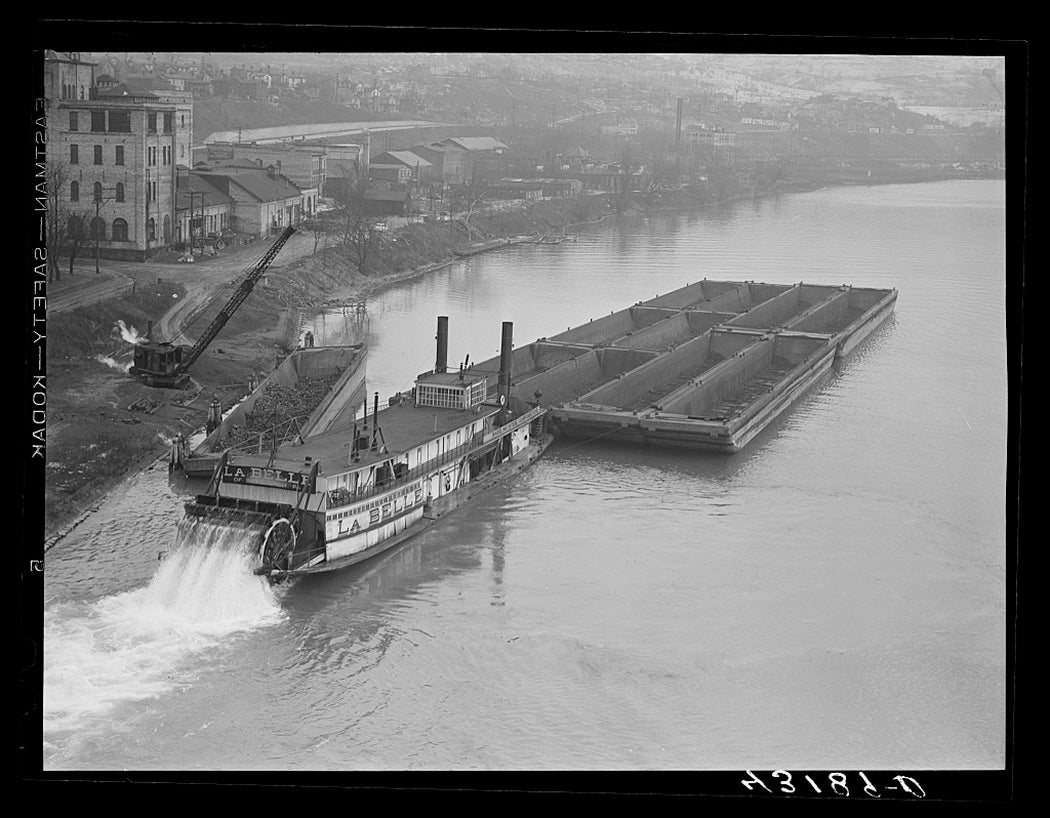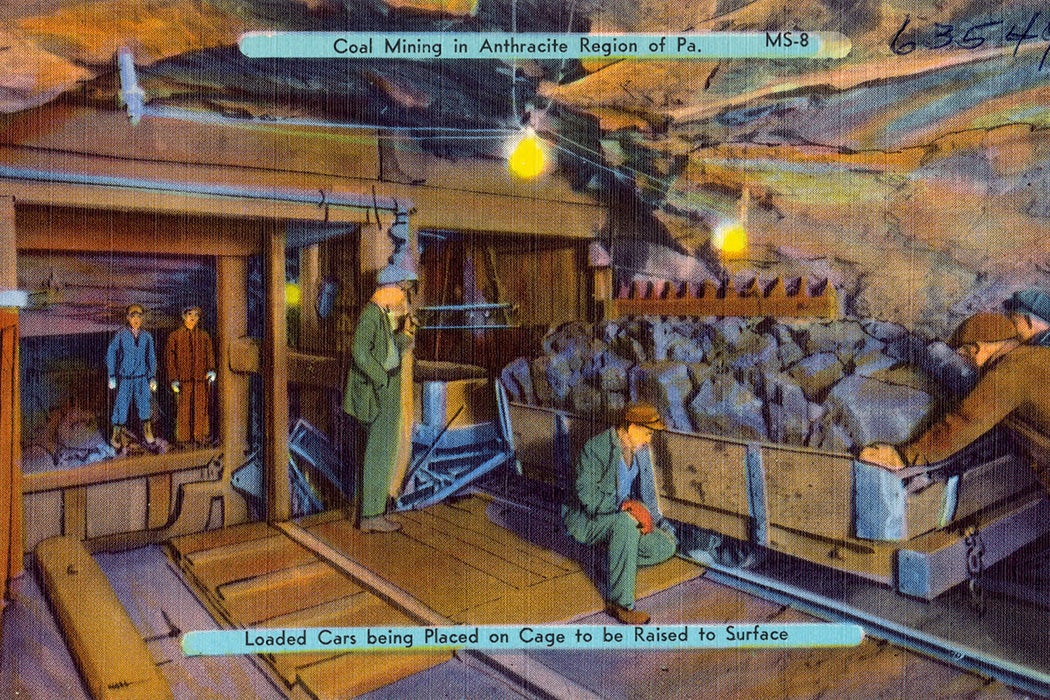Transforming the nation’s energy systems to run on renewable energy is an almost unimaginably huge task. But, as historian Christopher F. Jones writes, we’ve done this kind of thing before. When Americans started using fossil fuels in a big way, building the necessary infrastructure and convincing households and industries to make a change was a massive project. Jones takes the example of anthracite coal in Pennsylvania.
Up until the early nineteenth century, Americans made little use of fossil fuels, he writes. One exception was in rural northern Pennsylvania. For decades, people there had been mining coal from large deposits to heat their homes and power their forges. But there were two big reasons people elsewhere didn’t imitate them. First, transporting the coal out of the region was prohibitively expensive. And second, homeowners and manufacturers found the super-hard anthracite coal difficult to use. For the rare energy needs that couldn’t be satisfied with firewood, water power, or human or animal muscle, Americans typically used bituminous coal, which was softer and easier to light. In 1806, Philadelphia’s city waterworks bought a few tons of anthracite coal but ended up using it as gravel because they couldn’t figure out how to burn it.

A collection of Pennsylvania coal boosters, including merchants, industrialists, politicians, and scientists, decided to change things. They started by turning two waterways, the Lehigh and Schuylkill Rivers, into transportation systems—erecting gates, digging canals, and generally retrofitting the rivers for the industrial age. Hundreds of workers removed large rocks and slate ledges and built up new canal banks.
“The Schuylkill Canal cost so much money to complete that it would have gone into bankruptcy if Stephen Girard, the richest American at the time, had not granted large sums of money to the enterprise,” Jones writes. “The completion of these canals was only possible because residents of the eastern mid-Atlantic poured a significant fraction of their labor, savings, and expertise into these projects.”
With a plentiful supply arriving in Philadelphia and other cities, the price of anthracite dropped sharply, making it an attractive alternative to firewood, which was rising in price as the eastern part of the country was deforested. And coal boosters took a number of steps to help homeowners and business owners make the shift to coal. They commissioned a company to build cheap coal stoves, conducted experiments to demonstrate the fuel’s quality, and offered prizes for the development of techniques for using anthracite in iron forges.
As the fuel caught on, it transformed society. Urban populations grew larger enough that they couldn’t be supported by just firewood harvested from the surrounding countryside. Manufacturers moved from locations near natural sources of water power and set up shop in city centers. The cheap intense heat provided by the coal helped Philadelphia become a national leader in heat-intensive operations like glass-making. Of course, there were many troubling effects as well.
Over the coming years, we’ll see the kinds of transformations the switch to new renewable energy brings to the United States and the world.
Support JSTOR Daily! Join our membership program on Patreon today.







